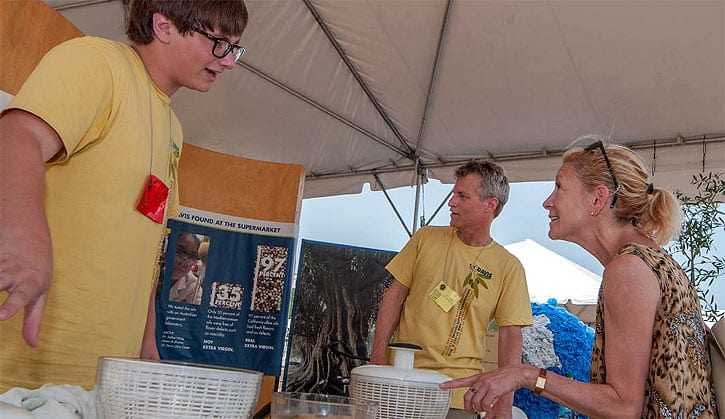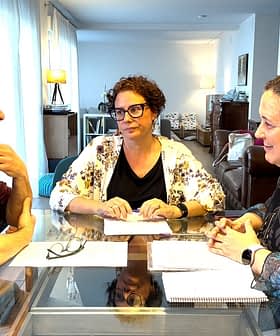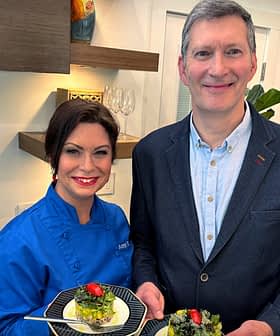
The Smithsonian Folklife Festival is held every year on the National Mall in Washington, DC. Each year sees three new festival themes. This summer, the 46th edition of the festival featured the USDA and Land-Grant University System — a partnership that is based on legislature signed by Abraham Lincoln 150 years ago in an effort to grant land and establish universities, and help facilitate the economic development of agriculture in the United States.
There are a number of land-grant universities in the country, and University of California at Davis is one of them. The Smithsonian was interested in highlighting sustainability and that’s when the UC Davis Olive Center came to mind.
As a biking campus, the olive trees that lined a heavily traveled bike path would fall on the ground and create an extremely slippery surface. In 2004, it was calculated that olive related accidents on the campus amounted to $60,000 in legal costs and liability claims.
Sal Genito, then director of buildings and grounds, suggested harvesting the olives for oil as a sustainable solution to this costly hazard. In 2005, the campus harvested a couple of tons of olives for the first time, and thanks to the community embracing this idea, they sold out of the olive oil within days.
Around the same time, Dan Flynn was finishing up 17 years as a legislative consultant in Sacramento. When a group of University of California and Cooperative Extension olive supporters proposed an educational center for olives and olive oil under the Robert Mondavi Institute for Wine and Food Science, Dan was a logical choice as the inaugural executive director in 2007. The UC Davis Olive Center was then launched in 2008.
Today, the center produces almost 600 gallons of olive oil during a good harvest. Next year will mark the first harvest of the 8 acres of olive trees that have been planted on campus since the inception of the program. Proceeds go toward some of the olive center’s budget.
Flynn, who is now the Executive Director of the Olive Center, shared his experience at the Smithsonian Folklife Festival. “At the festival we talked about this sustainable solution to this problem on campus, but we also talked about how olive oil is made, what are some of the attributes of good olive oiland the defects of bad oil, and we had people smell samples of familiar oil versus fresh oil.”
“One of the things we’re looking to do is help consumers get better quality, so we suggest that they look for a harvest date on the label. We’re trying to impress upon them the importance of freshness, because olive oil is a natural product and it’s better when it’s fresher.”
“We also discussed the studies that (the Olive Center) did which found that a high percentage of the imported supermarket olive oil wasn’t up to extra virgin standards. We found that there are a lot of people who were surprised by this, and while some people could smell the difference between the sample oils, others were very savvy when it came to olive oil — it was quite a range.”
Flynn also held a few demonstrations touching on the myths of olive oil. For example, the myth that you can’t fry with extra virgin. Flynn wowed the crowd when he fried potatoes in extra virgin olive oil, “and the sky didn’t fall.”








